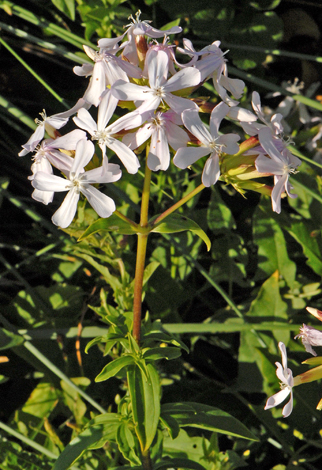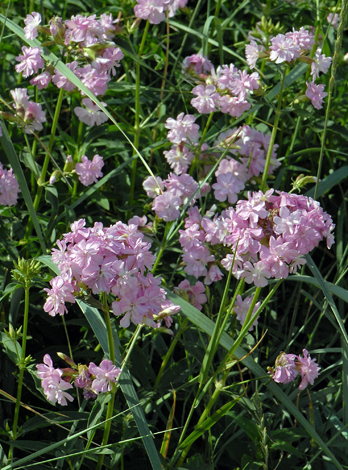Saponaria officinalis Soapwort I


I find this plant to be locally plentiful when I find it which is not as often as Stace suggests. It has a pretty pink flower in the late summer and continues flowering until the Autumn. The deeper pink double (flore pleno) form also found in the wild can fool people into thinking it is something other than Soapwort.
Soapwort was at one time the only source of cleaning agent for ordinary folk and you might think that it would have little use in today's world of soaps and detergents. You'd be wrong. Most modern cleaning agents are far too powerful to use on old and delicate fabric. Organisations like English Heritage, which have responsibility for historic costume made with very old fabrics and dyes, still use soapwort. The glucoside saponin, extracted by the mashing the plant with water, is the exactly the right sort of mild cleaning agent best suited to cleaning such delicate garments.
Even today soapwort is still cultivated for making soap to wash wool in some middle eastern countries such as Syria.
Saponaria officinalis is an archeophyte. That means it was introduced to the British Isles before 1500 AD. It is now a common plant in England, Wales and Ireland but far less common in Scotland.
LHS: Red Rocks marshes, Wirral 5th August 2011 RHS: Crosby Dunes, 21st August 2009
Added on 29th October 2004, amended on February 3rd 2005, November 21st 2005, updated 28th January 2012, updated 18th March 2015




